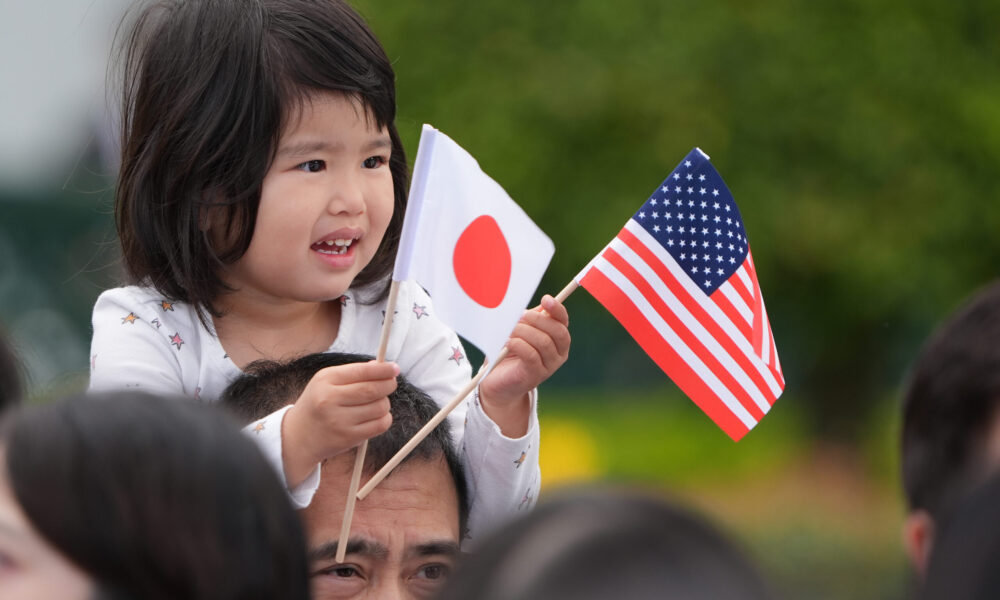In a May article, former Biden administration official Ely Ratner called for establishing a Pacific defense pact akin to NATO, mainly to counter China. Other analysts have already pointed out roadblocks to such a security arrangement, including President Trump’s “America First” voter base, Asian allies’ insecurity about the United States’ commitment to the region, and concern about Trump’s confusing “reciprocal” tariffs. However, like much of US foreign policy in the region, the main problem with an “Asian NATO” is that it serves the interests of the United States more than those of its allies.
In a sense, Ratner’s piece is almost refreshingly honest as a clear statement of the traditional foreign policy establishment’s view of East Asia. Primarily, this view is based on an alarmist view of China’s political slogan about the “great rejuvenation of the Chinese nation,” mischaracterizing it as a desire for regional hegemony. If China succeeds, Ratner says, it would relegate the United States “to the rank of a diminished continental power: less prosperous, less secure, and unable to fully access or lead the world’s most important markets and technologies.”
In other words, the United States fears that a stronger China would mean that Washington has less power to call the shots from the other side of the world.
Defense and economics are intertwined
Pursuing a bipolar alignment in Asia wherein countries either align with or against China is a dead end, not only because it is unappealing to East and Southeast Asian countries, but also because it is a security risk. China hawks point to statements by the late Japanese Prime Minister Shinzo Abe and the head of the Philippines military that their countries would inevitably become involved in a conflict over Taiwan. What they leave out is the fact that these countries would most likely be involved as bases for US military operations. In other words, the involvement of Japan or the Philippines hinges on whether the United States would respond militarily to a Chinese invasion. The best way to avoid this scenario is for the United States to maintain a reasonable Taiwan policy based on reassurance and reinforcement of the post-1979 status quo in the Taiwan Strait.
However, an Asian defense pact would primarily be concerned with getting the United States’ regional allies to go along for the ride, locking them into an adversarial relationship with China. Political tensions aside, these are all countries that have close economic ties with Beijing and, unlike in post-war Europe, there is no economic curtain dividing the region in two. As Asia expert Evan Feigenbaum of the Carnegie Endowment has repeatedly emphasized since Trump’s tariff bonanza began, it is completely illogical to implement coercive economic policies and expect allies to turn around and happily agree to whatever security policy Washington cooks up.
Moreover, it is not feasible to keep defense and security policy siloed from economic ties. As an article from the Australian Lowy Institute argued, a multilateral security organization among US allies in the region would put them in the uncomfortable position of having to choose between China or the United States. Even countries with existing bilateral security agreements with Washington would stand to lose significantly from a reduction or complete cut-off of trade with China. China is both Australia and Japan’s largest import and export market, as well as the Philippines’ largest source of imports and third-largest destination for exports (trailing the United States by less than 2%). The same piece from Lowy goes on to point out that Australia’s current government has seen huge electoral success on the back of a pragmatic foreign policy that has stabilized ties with China.
Allied uncertainty
Allies questioning the United States’ reliability and pushing for a more diversified foreign policy is not something that will reverse overnight, if at all, once Trump leaves office. Just look at Japan: its summer elections saw the fringe right-wing party Sanseito take 15 seats in Japan’s upper house. A “Japan-first” party described by many as reactionary and xenophobic, Sanseito’s proposed constitution calls for a ban on the presence of foreign militaries in Japan.
While Japanese leadership has played down alliance tensions, Prime Minister Shigeru Ishiba has a history of seeking adjustments to the alliance, most recently by exploring a revision of the Status of Forces Agreement that governs US-Japan military ties. While American strategists have wanted Japan to spend more on defense, I suspect few would trade that for Japan having a greater say in what the US military can or cannot do on Japanese soil. The military alliance is fundamentally imbalanced and Japan has a very limited ability to say no.
An “Asian NATO,” at this moment in time, comes across as less of a strengthened US security guarantee and more of an effort to shift the burden of defense from the United States onto its allies, specifically by giving Washington more power to decide who fights who, when, and how. Considering the popularity of a party that openly questions the US military presence in the country and the Trump administration’s extortive tariff policies, the Japanese should ask what exactly they would stand to gain from such an alliance.
That is not to say that Tokyo has never considered a regional security alliance; as recently as last fall, Ishiba himself was floating it as a possibility. However, in a book published in August 2024, the prime minister also lamented the trend of treating China only as a threat and the increasing difficulty of maintaining a balanced approach to diplomacy with Beijing. If the security environment is indeed worsening, Ishiba says, then the need for open diplomatic channels is all the greater.
The deterrence dead end
That could not be more on the money. While the United States would like to force regional allies to choose between Washington and Beijing, trying to cut China off from these nations would be like trying to fit a champagne cork back in the bottle. What is needed is a pragmatic approach to foreign policy, one that puts diplomacy ahead of security measures and centers the voices of regional actors. At the Union of Concerned Scientists, we are trying to help make that happen through our annual East Asian Quadrilateral Dialogue, which brings together experts and legislators from China, Japan, South Korea, and the United States to explore a more balanced foreign policy.
The United States would be more likely to resolve territorial disputes in the South and East China Seas through dialogue than through deterrence. China must tone down its dangerous activities in the South China Sea, like recent maneuvers that led to the fatal collision of two of its ships. However, as Lyle Goldstein of Brown and Defense Priorities pointed out, this is mainly a response to the United States building up its presence in the Philippines as a staging ground to deter China from invading Taiwan. He argues, and I agree, that these US actions are not in the interests of the Philippines, Taiwan, the United States, or any of the billions of people with an interest in avoiding a war between China and the United States.
Successive US administrations have tended to wave off statements about what China wants as propaganda. Maybe it’s time for our Asian allies to ask themselves what Washington actually wants?

